

دوراتنا

Tools of the Trade: Linux and SQL
This is the fourth course in the Google Cybersecurity Certificate. These courses will equip you with the skills you need to apply for an entry-level cybersecurity job. You’ll build on your understanding of the topics that were introduced in the third Google Cybersecurity Certificate course. In this course, you will explore computing skills that you’ll use on-the-job as a cybersecurity analyst. First, you'll practice using Linux, an operating system commonly used by cybersecurity professionals.
-
Course by

-
 Self Paced
Self Paced
-
 27 ساعات
27 ساعات
-
 الإنجليزية
الإنجليزية

Desarrollador back-end de Meta
Ready to gain new skills and the tools developers use to create websites and web applications?
-
Course by

-
 Self Paced
Self Paced
-
 الإسبانية
الإسبانية

مطوّر الواجهة الخلفية من Meta
Ready to gain new skills and the tools developers use to create websites and web applications?
-
Course by

-
 Self Paced
Self Paced
-
 عربي
عربي
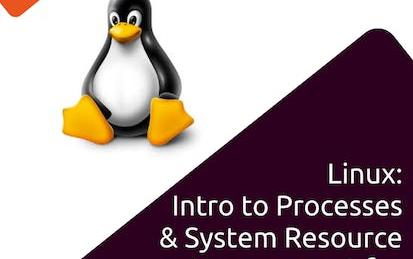
Linux: Processes & System Resource Management for DevOps
In this 1-hour long project-based course on Linux: Intro to process and system resource management for DevOps, you will be working entirely on the command line and using powerful Linux commands such as ps -ef, top, and pstree to learn how process and system resources work and are managed in Linux. You will be starting, stopping, searching and viewing running processes and seeing how they are all linked together in the process hierarchy.
-
Course by

-
 Self Paced
Self Paced
-
 3 ساعات
3 ساعات
-
 الإنجليزية
الإنجليزية
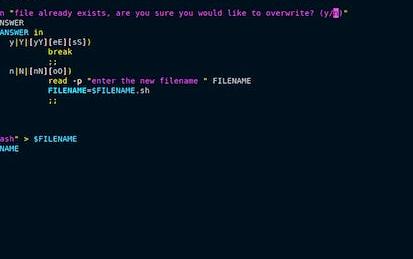
Automation Scripts Using Bash
In this 2-hour long project-based course, you will learn how to create Bash scripts that automates long and tedious tasks, evaluate and review some of the most commonly-used linux commands, and understand concepts such as conditional statements, loops, piping, and redirection to create powerful scripts.
Note: This course works best for learners who are based in the North America region. We’re currently working on providing the same experience in other regions.
-
Course by

-
 Self Paced
Self Paced
-
 3 ساعات
3 ساعات
-
 الإنجليزية
الإنجليزية
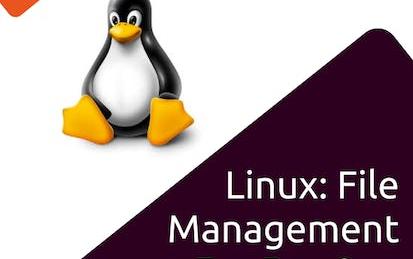
Linux: File Management for Devops
In this 1-hour long project-based course on Linux file management for DevOps, you will be working entirely on the command line and using powerful Linux commands working with files and directories and manipulating them. We will copying, moving and creating symlinks between files, as well as learning how to search through outputs and cut outputs by columns to only retrieve the data fields that we need. We will learn various commands and options that will give you the confidence to work with files in most Linux environments.
-
Course by

-
 Self Paced
Self Paced
-
 3 ساعات
3 ساعات
-
 الإنجليزية
الإنجليزية

Create User Directory and Files with Linux Commands
Practically everything on a Linux operating system is a directory or file. It is important to understand how the file system is structured and how to manipulate it from the command line. This allows for file management even when no GUI tools are present, which is common in a server environment. For example, in an organization it is important for new users to share a common directory and file setup to improve productivity. A system admin can add the new user and create the directory structure common to all other users in the system.
-
Course by

-
 Self Paced
Self Paced
-
 2 ساعات
2 ساعات
-
 الإنجليزية
الإنجليزية
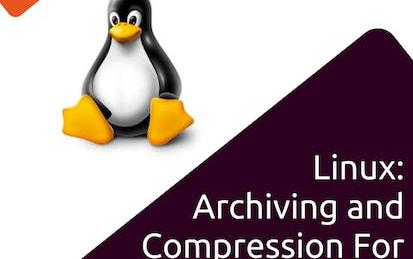
Linux: Archiving and Compression for DevOps (tar/gzip)
In this 1-hour long project-based course on Linux: Archiving and Compression for DevOps you will be working entirely on the command line and using powerful Linux commands using tar and various compression commands such as gzip and bzip2 to learn how file archiving and compression works in Linux. You will be archiving a Wordpress directory of files and compressing the archive using various compression formats. You will no longer be mystified by what these commands and options are doing, and you will understand the structure of these various commands better.
-
Course by

-
 Self Paced
Self Paced
-
 3 ساعات
3 ساعات
-
 الإنجليزية
الإنجليزية
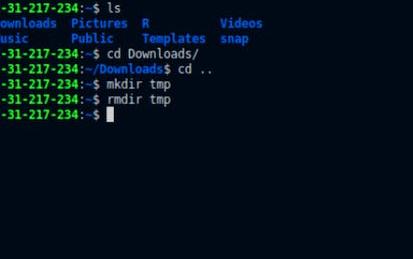
Command Line in Linux
Linux is a popular operating system that is based on the Unix operating system. It has many distributions which have different interfaces for installing software, different user interfaces, and so on. One thing all of the ‘distros’ have in common is that they all have a command line interface, or terminal. In fact, sometimes there is no user interface except the terminal itself. A Linux server running a web application on AWS, for example, may only contain the software required to run the application, and no GUI ‘window’ system at all.
-
Course by

-
 Self Paced
Self Paced
-
 3 ساعات
3 ساعات
-
 الإنجليزية
الإنجليزية

Files and directories in the Linux filesystem
In this project, you will use Linux commands to traverse Linux directories and list files. You will also learn where certain files are stored, how to change permissions to allow access, and how to decide where files should reside. Linux is a popular operating system that is based on the Unix operating system. It has many distributions which have different interfaces for installing software, different user interfaces, and so on. Each distribution has a similar filesystem with directories used to house and organize files.
-
Course by

-
 Self Paced
Self Paced
-
 2 ساعات
2 ساعات
-
 الإنجليزية
الإنجليزية
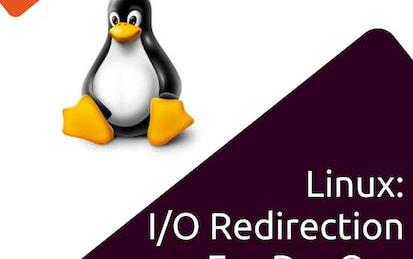
Linux: I/O Redirection for DevOps
In this 1-hour long project-based course on Linux i/o redirection for DevOps you will be working entirely on the command line and using powerful Linux commands and redirection operators to learn how input and output redirection works in Linux. You will get experience of taking control of what happens to the stdin and stdout of all your commands and no longer be confused about the details on how piping and redirection works in Linux. This course is designed for any person working or who intends to work with Linux, from Linux system administrators to developers and DevOps practitioners.
-
Course by

-
 Self Paced
Self Paced
-
 3 ساعات
3 ساعات
-
 الإنجليزية
الإنجليزية

Linux Basics: The Command Line Interface - 6
This course will introduce you to Linux, a powerful operating system used by most professional developers! Why add Linux to your C programming skills? Most people use Linux without knowing it! Whether you use a smartphone, search the web, or use an ATM, each time Linux is involved somewhere in the background. It is the most used operating system for embedded devices and high-performance servers.
-
Course by

-
 Self Paced
Self Paced
-
 8 ساعات
8 ساعات
-
 الإنجليزية
الإنجليزية

IBM Applied DevOps Engineering
Gain the in-demand skills to advance from programming to DevOps engineering. In this program, you’ll learn the latest DevOps practices, tools, and technologies from experts at IBM to get job-ready in less than 3 months. Almost every company is looking to become more Agile and shorten software development cycles, creating a high demand for DevOps Engineers!
-
Course by

-
 Self Paced
Self Paced
-
 الإنجليزية
الإنجليزية

Meta Back-End Developer
Ready to gain new skills and the tools developers use to create websites and web applications? This certificate, designed by the software engineering experts at Meta—the creators of Facebook and Instagram, will prepare you for an entry-level career as a back-end developer. In this program, you’ll learn: Python Syntax—the most popular choice for machine learning, data science and artificial intelligence. In-demand programming skills and how to confidently use code to solve problems. Linux commands and Git repositories to implement version control.
-
Course by

-
 Self Paced
Self Paced
-
 الإنجليزية
الإنجليزية

BI Foundations with SQL, ETL and Data Warehousing
The job market for business intelligence (BI) analysts is expected to grow by23 percent from 2021 to 2031 (US Bureau of Labor Statistics). This IBM specialization gives you sought-after skills employers look for when recruiting for a BI analyst. BI analysts gather, clean, and analyze key business data to find patterns and insights that aid business decision-making. During this specialization, you’ll learn the basics of SQL, focusing on how to query relational databases using this popular and powerful language. You’ll use essential Linux commands to create basic shell scripts.
-
Course by

-
 Self Paced
Self Paced
-
 الإنجليزية
الإنجليزية
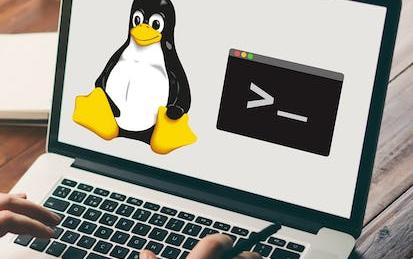
Hands-on Introduction to Linux Commands and Shell Scripting
This course provides a practical understanding of common Linux / UNIX shell commands. In this beginner friendly course, you will learn about the Linux basics, Shell commands, and Bash shell scripting. You will begin this course with an introduction to Linux and explore the Linux architecture. You will interact with the Linux Terminal, execute commands, navigate directories, edit files, as well as install and update software. Next, you’ll become familiar with commonly used Linux commands.
-
Course by

-
 Self Paced
Self Paced
-
 27 ساعات
27 ساعات
-
 الإنجليزية
الإنجليزية

Version Control
Learn how modern software developers collaborate across the world without messing up each other's code. You will look at the different version control systems and how to create an effective software development workflow. You will be introduced to some of the most commonly used Linux commands that you can use to work with files on your hard drive and create powerful workflows that will automate your work, saving you time and effort. Finally, you will see how Git can be used in software development projects to manage team files. And you will create a repository that can manage code revisions.
-
Course by

-
 Self Paced
Self Paced
-
 13 ساعات
13 ساعات
-
 الإنجليزية
الإنجليزية

Linux Server Management and Security
Whether you are accessing a bank website, Netflix or your home router, chances are that your computer is interacting with a Linux system. The world runs on Linux. In this course, we will dive into how Linux works from an enterprise perspective. In week 1 we will look at what Linux is used for in the enterprise. By the end of week 1, you will be able to differentiate between different versions of Linux and understand how they are used in an enterprise environment. In week 2, we will explore how Linux systems are configured.
-
Course by

-
 Self Paced
Self Paced
-
 13 ساعات
13 ساعات
-
 الإنجليزية
الإنجليزية



